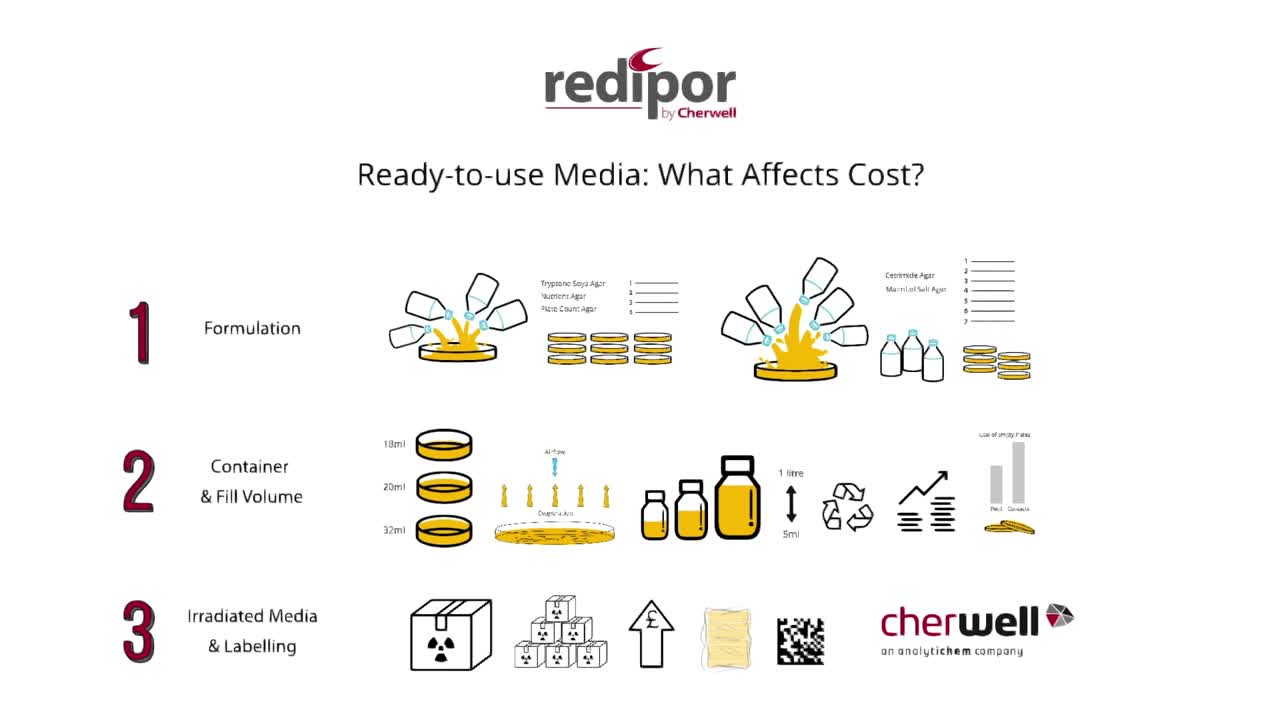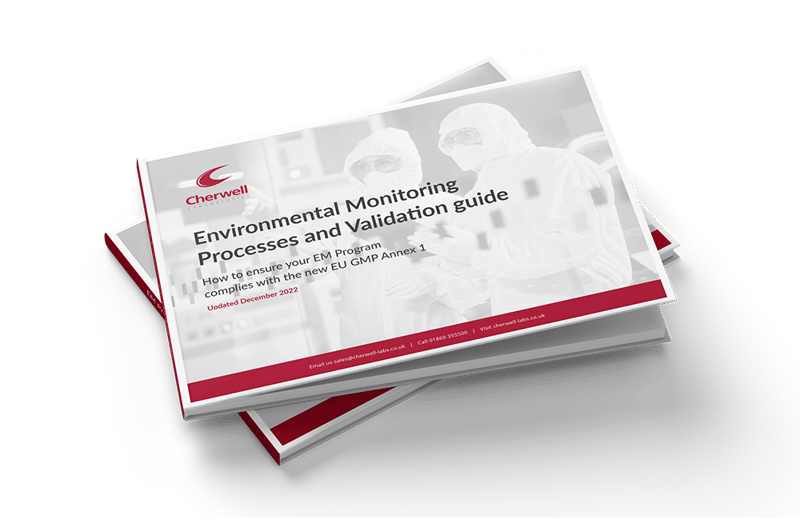Multiple factors influence media cost
Cost is often one of the primary factors when we’re considering buying a product. Other considerations might include service, quality, delivery cost and lead time.
The purchasing decision is often difficult, influenced by many factors; ready-to-use plates and bottles are no exception, so it's essential to grasp the factors that influence pricing. The process is the same as when buying a new car or kitchen, with each added feature or optional extra raising the price.
When pricing each Redipor product we take into consideration the cost of raw materials and processing involved in production. This is quite time-consuming but vitally important, especially when we’re looking at producing tailored solutions that meet customers’ specific requirements.

Formulation, container type and volume
The first element is the base formulation of the culture media. Typically, general-purpose media such as Tryptone Soya Agar, Nutrient Agar or Plate Count Agar are costed independently because their formulations are simple, containing only four or five ingredients. Also, these products are produced in very high volumes, which helps keep costs down. More complex formulations, such as selective or differential media, for example, Cetrimide Agar or Mannitol Salt Agar, have multiple ingredients and are produced in lower volumes, meaning they command a higher price point.
 The next factor will be the container type and features, and fill volume. Petri dishes typically have anything from 18-20ml per plate, but can rise up to 32ml per plate, depending on the application. It’s quite common for environmental monitoring plates to have a deep fill in order to resist the high air flow rates to which they’re subjected: the shallower the fill, the greater the risk of the agar drying out, leading to desiccation and cracking.
The next factor will be the container type and features, and fill volume. Petri dishes typically have anything from 18-20ml per plate, but can rise up to 32ml per plate, depending on the application. It’s quite common for environmental monitoring plates to have a deep fill in order to resist the high air flow rates to which they’re subjected: the shallower the fill, the greater the risk of the agar drying out, leading to desiccation and cracking.
Contact plates are more standard, as the fill volume is fixed; we just need to create a raised meniscus, so the plate can be pressed on to a surface. However, there is a price variation between the two types of plates, which is influenced by the lower volumes produced. With bottled products, the containers, closures and fill volumes are highly variable: bottles can range from 5ml to 1-litre capacity, and be made of glass or plastic. In all cases, though, it’s easy to appreciate that a greater fill volume equates to higher cost.
Irradiated media and labelling
Packaging can have a significant impact on cost, but it’s especially the case with regard to irradiated media for environmental monitoring applications. Irradiation is an expensive process, and represents a direct cost per box of product processed. 
Secondly, added layers of packaging, or the use of special gas impermeable films for isolator packs, increase cost per sleeve of product. Added features such as bespoke labelling, bar coding or pack size can also affect cost.
Compiling all of this information is vital when processing any new product request, hence all the questions we’ll ask following your initial enquiry. Ultimately, we want to get it right first time and deliver the exact product you need for your application. So, how much does ready-to-use media cost? As you can see, the answer depends on many factors, and your individual requirements.






